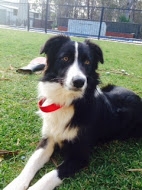
Browse Categories
- Dog Boot Camps
- Test
- Test
- Dogs Please Clicker Training
- Pet Insurance Comparison
- Exercising Pets With An E Scooter
- 10 Reasons Why Guinea Pigs Are Wholesome Little Pets
- Why You Should Use a Shed to House Your Pet
- How can Dog Owners Keep their Carpets Clean?
- How to Keep Your House in Order With Large Pets
- What is the Best Way to Feed a Puppy to Keep Them Healthy
- Pets Please
- All Animals and Pets
- Dogs and Puppies
- Cats and Kittens
- Birds
- Fish
- Reptiles
- All Other Small Pets
- Claws 'N' Paws Events
- PetsInLimbo/Greys4PetsInc.
News Search
PetsPlease News and Advice
Dogs Please Clicker Training WEEK 3
Week 3

Welcome back.
Really understanding the clicker and how it works will bring you to dog training success. Most people can click towards a dog and reward a behavior within a second or two of it occurring. It’s important too that you see clicker training from the view of your dog.
The best dog trainers can time their clicker to perfection.
Have you ever played the ‘hot/cold’ game where you encourage someone to find something by stating how hot or cold that they are? The closer they get to the object the ‘hotter’ they are. If you have ever been the person on the receiving end, and tried to find the object via the delivery of these two words, then you will already have a vague idea of how clicker training makes your dog feel.
To your dog clicker training can be a mix of confusing signals or a perfectly timed game of learning.
The idea is to click when your dog is actually thinking about the act that you want him to do. This usually occurs at the same time that he does it.
The Clicker Game
Grab a volunteer and a clicker and leave your dog in another room. Ask the volunteer to think of a task that they want you to do and then show you exactly how to do it by use of the clicker alone.
The task can be something simple like sit on the floor, with one arm up, or stand on a chair. The idea is to use no words, no body language but to simply use the click to show you what they want from you. This will give you invaluable understanding when clicker training your dog
Timing is vital, for instance if you are teaching your dog to sit using a clicker then as his rear touches the ground you click then you have perfectly captured that moment. However if you click when he is already sitting and thinking about raising a paw, or has indeed just raised a paw, then your dog can easily learn to raise a paw rather than sit. I have a dog that does just that and his faint random paw wave appears every time that he wants something.
When your dog is successfully tuned in to a clicker there are three ways that you can use it. All are interlinked and pretty simple. The trick is to use the one that works best based on what you are teaching at the time.
What I am trying to avoid here is giving you, step by step, instructions to teach very specific things. The aim of these few weeks is to provide you with a dog training toolkit that will serve you regardless of what you are teaching. So I am giving you the methods and in turn you must apply them to the commands. It’s a much better way of learning how to train your dog.
Capturing a Behaviour
Using a clicker to capture a behavior is just that. The art is being careful enough to capture the right behaviour in a way that your dog will understand. When you taught your dog to focus on you, earlier, then you captured his behavior (looking at you) with a click. You then need to add a specific command to the act and couple the two in your dog’s mind by giving the treat and stating the command then bringing the command forward gradually, it’s a simple as that.
Capturing can be used whether your dog is doing something natural to him or following the process of a lure or shaping session which are both described below.
Luring a Behaviour
Luring can be used when a dog is not really getting the idea to offer a behavior. It is literally ‘giving the dog a clue’. For instance if you have trouble getting your dog to look into your face in order to capture the behavior you can lure him into position.
It is simply a case of showing your dog a treat, bringing the treat back towards you, over your head and then down behind the back of your head, leaving your dog to look directly into your eyes and then clicking to capture the position and adding your command as above.
You may have worked that out already, and I didn’t tell you sooner on purpose, because as a good trainer it is important that you learn to think about how you can get the result that you want from your dog.
Shaping
Shaping your dog’s behaviour is the act of rewarding a specific act in smaller increments until the final behaviour is learned. This is a great method to use when the dog is learning something quite complicated.
We will use shaping more as we work through the next few sessions.
This week I would like you to choose a specific command and teach it to your dog by luring him into position then capturing the behaviour and adding a command. Then I would like you to choose a very different command and teach it to your dog by simply capturing the behaviour with a click each time it occurs naturally. Here are some ideas;
· Sit
· Down
· Touch with a paw
· Roll over
· Play dead
· Weave through your legs
· Nudge you with his nose
· Look left or right
· Barking – to the command of ‘speak’
Or you can teach something completely different. There are many options.
We are looking forward to hearing how you get on! So don’t forget to tell us which trick you are teaching, why and how quickly your dog learns it.

Wednesday 8th April 2015
